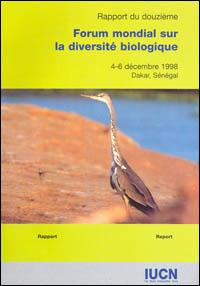

Related content
Preserving the Pulse of the Delta: Rufiji’s Community-Led Initiative to Safeguard Mangrove Ecosystems
In Tanzania’s Rufiji Delta, mangroves cover over 53,000 hectares and sustain thousands of people with food, fuel, timber, and coastal protection. Yet, heavy dependence on these forests and weak enforcement of regulations have caused widespread degradation. To address this, communities in Nyamisati, Kiomboni, Mfisini, and Mchinga established the Salale Collaborative Mangrove Management Area under a Participatory Forest Management approach. This grassroots solution empowers local people to co-manage resources, strengthening governance, stewardship, and resilience. With support from partners such as USAID, UNEP, and the Nairobi Convention, communities have restored 10 hectares of mangroves and are actively involved in conservation planning. The initiative addresses habitat loss, livelihood insecurity, and climate threats by ensuring that local stakeholders are at the center of decision-making. The result is both ecological recovery and improved livelihoods, proving that community-led action can safeguard vital ecosystems.
Lignes directrices sur l’exploitation des espèces menacées
Les sociétés du monde entier exploitent les espèces sauvages, dans une mesure plus ou moins grande, pour l’alimentation, les matériaux de construction, les soins de santé, les médicaments, la lutte contre les parasites, l’ornementation, générer des revenus, les loisirs, ainsi qu’à des fins culturelles et spirituelles. Si cette utilisation des espèces sauvages contribue directement au bien-être de milliards de personnes dans le monde, la surexploitation des espèces sauvages est l’un des principaux facteurs de perte de biodiversité.
Guide sur l’évaluation des impacts cumulatifs sur la biodiversité des projets éoliens et solaires et des infrastructures associées
Un objectif clé de ce guide est de recadrer l’EIC pour aider à soutenir la conservation de la nature et la réalisation des objectifs mondiaux en matière de biodiversité (aux côtés des objectifs climatiques et autres objectifs de développement sociétaux). Ce guide est centré sur la biodiversité et le développement éolien et solaire, et s’adresse principalement aux planificateurs gouvernementaux et aux promoteurs de projets. Cependant, étant donné qu’il est conçu pour aider à relever certains des défis existants de l’EIC, sa portée est potentiellement plus vaste.
Tabe’a III (Arabic version)
Tabe’a III addresses the status and trends in the implementation of the World Heritage Convention in the Arab region during the period from 2015 to 2019. This review was conducted in the context of emerging global trends and priorities associated with the World Heritage Convention, as well as other related global natural heritage platforms and programmes. Tabe’a III documents progress made in the conservation of natural and mixed World Heritage sites in the Arab region, as well as providing an update on the state of conservation of natural sites. Additionally, special themes address key priorities which have emerged from heritage protection, conservation challenges and opportunities arising in the region. Finally, there is a summary update on the Arab States’ lists of possible candidate sites, known as Tentative Lists, with notes on their development since the Tabe’a II report.
Practice guidance for protected and conserved area finance
Protected and conserved areas (PCAs) have been proven to provide enormous value to nature, people and the economy. They are an effective means by which species, habitats and ecosystems can be conserved, restored and sustainably utilised. This Guide provides detailed frameworks, descriptions and insights into the use of conservation finance solutions to achieve PCA outcomes. The guidance presents the case for PCA investment and sustainable finance, describes the role and use of finance and economics to achieve PCA outcomes, and presents guidance on how to conduct strategic and practical financial planning in support of these outcomes.
Réduction des menaces pesant sur les espèces et restauration en République centrafricaine
This report presents findings from an assessment of the biodiversity conservation potential of four project sites: Lobaye, Mambéré-Kadéï, Ombella-Mpoko, and Sangha-Mbaéré located in the Bangui region of the Central African Republic (CAR). This assessment was done using the Species Threat Abatement and Recovery (STAR) metric, which employs high-resolution imagery and an approach to modelling species’ Area of Habitat (AOH) that was revised after June 2020 among other enhancements. This work was undertaken to better inform threat abatement and restoration planning and implementation at the partner project sites, and as part of a wider effort to pilot and strengthen the use of STAR as a tool for restoration and conservation practitioners, communities, investors, and policymakers.
Relevancia cultural y espiritual de la naturaleza
Estas directrices ofrecen un enfoque hacia la creación de un papel prominente y apropiado para la relevancia cultural y espiritual de la naturaleza dentro de la gobernanza y la gestión de las áreas protegidas y conservadas. Intentan superar algunas de las dificultades causadas por los objetivos contradictorios a la hora de comprometerse con la cultura en el contexto de la conservación de la naturaleza. Lo hacen reconociendo la diversidad global de visiones del mundo, sistemas de gobernanza, religiones y lenguas que conforman las diferentes formas de entender la naturaleza.
Enhancing Nature-Based Solutions in North Macedonia
The main goal of this scoping study is to provide a state-of-the-art overview of the national aspect of North Macedonia in regard of pilot activities to apply the Nature-based Solutions (NbS) concept for disaster risk reduction (DRR). The study refers to the available information from existing policies, programmes, and strategies (at the global, regional, national, and local levels). The analysed data are related to NbS for DRR, directly or indirectly.

